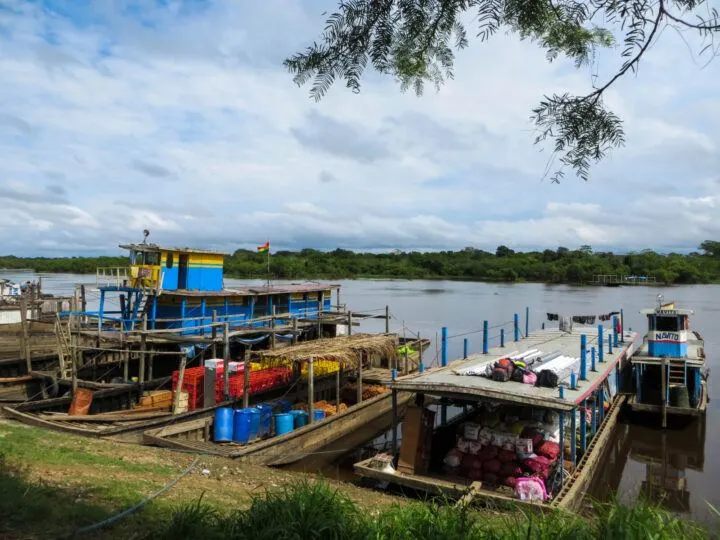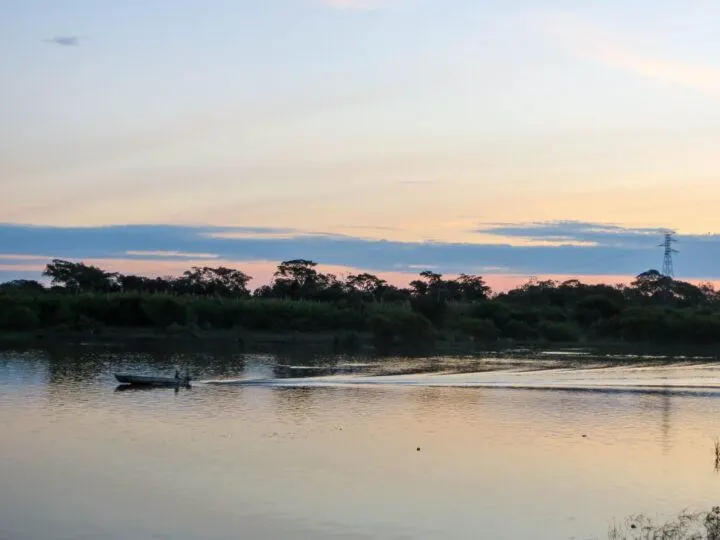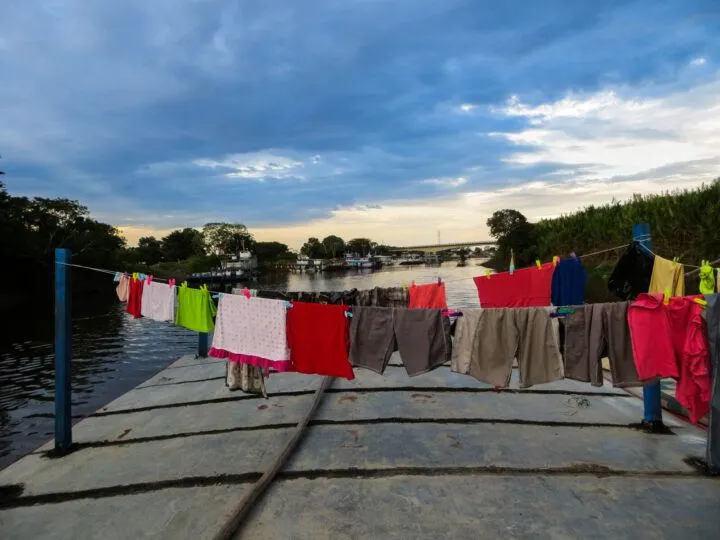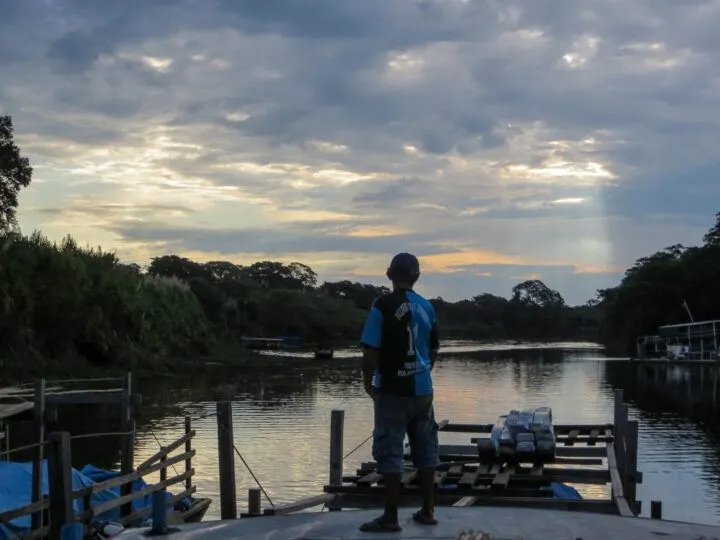Most travellers to Bolivia are attracted by the prospect of visiting unspoilt jungle, and potential sightings of exotic animals near Rurrenabaque, in the northern department of Beni.
But we had chosen a wilder, less-travelled route. Passage had been arranged on board ‘El Novito’; a small, seven-crewed boat.
It would travel slowly up the River Manmoré between Puerto Almacén and Santa Ana, both on the eastern outskirts of the Amazon. It was a route that – weather permitting – would take two and a half days.
Expectations of relaxing beneath sunshine on deck, and sleeping on the roof under decadent constellations of stars, had driven us to buy hammocks and mosquito nets from the local market. We were feeling confidently prepared for our adventure but were clearly unacquainted with the changeable climate of the Bolivian Amazon.
According to the captain, the boat would depart that evening.
Yet, as with everything in Bolivia, timescales are the faintest of guidelines: mere pencil marks tracing lightly into the future. You should never expect them to be met. We were therefore unsurprised to spend our first night on a stationary boat, moored in the harbour of tiny Puerto Almacén.

Despite the crew having worked solidly throughout that first day – shoulders laden with heavy bags of cement, terracotta roof tiles and woven-plastic sacks of onions, oranges and potatoes – still, there remained cargo to load.
From our viewpoint on the bank the next morning, we watched incredulously at their tireless labouring; marvelling at the increasing weight of the cargo and expanding size of the vessel, which quickly became five boats to be attached to a single engine. Lazily we moved around on shore; acutely conscious of our redundancy as the activity at the river’s edge continued. Our crew were an army of ants, toiling ceaselessly; regulated and collaborative.
Two solid days of physical labour were what was needed to fill the boats. Then, our crew skilfully nudged and pulled each into place, securing them with ropes and well-practised knots tied around the central boat which would propel them. Finally, as the day yielded to dusk, we pushed off from shore.

A beautiful, watery sunset welcomed us to life on deck. Soon after, the blanket of falling night coated the banks and surrounding water, punctuated by sheets of distant lightning which engulfed the sky ahead. As our ears tuned into the cacophony of the jungle – starring, as I would later learn, singing toads – we became aware of the dozens of fireflies dancing in the shadows of the trees. There they mimicked the constellations hidden above by heavy clouds; clouds which threatened rain but also a welcome release from the sticky heat of evening and the pungent toxicity of diesel fumes gasping from the engine.
Travelling deeper into the night, we were astounded by the glimmers of what could only be a ghostly apparition of a fire – surely no one could live this far from civilisation? Yet our eyes had not fooled us. The stark orange of shooting flames burning outside a small, thatched hut appeared through the blackness, before disappearing once again into silent desolation.
The thick clouds above were not merely a threat that night but became a commanding storm which would send me crawling from my soaked hammock to find dry shelter. Spray drenched us from every angle and the boat rocked ominously as if pushed by malignant river spirits. Against the brunt of the wind, our vessel became powerless, and our crew took the sensible decision to dock.

The following day was spent motionless against the bank, awaiting the calming of the wind to allow us to continue. With little work for the crew, we began to learn about them and their families, some of whom were on board to cook. Gifting a spare can as an offering of friendship to our hosts, together we drank warm beer and shared jokes and glimmers into our respective lives.
With more placid weather, the boat recommenced its patient passage. Our final two days were a blend of cold winds and grey clouds which were spent peering from the roof into the surrounding jungle, willing a glimpse of a solitary jaguar, or a family of monkeys.
Occasionally, a pink river dolphin would follow us, playfully displaying a section of fin or snout for our delight. As evening fell, trails of parrots could be seen in the darkening sky, their fluttering movement more akin to the flight of butterflies than birds. At night, they were replaced with columns of bats that darted through the darkness, identifiable only by their sharply-edged wings and almost inaudible conversations. Throughout all, mosquitos were our constant companions, successfully finding any route into our nets. Each morning we counted the patterns of red bumps on our skin.

After four days on board, and my hammock eventually dry from the second night’s storm, the thatched roofs of Santa Ana came into view. Patient manoeuvres inched the boat into position along the shore, all to the backdrop of relentless drum beats which came from the naval base stationed nearby.
Finally, we descended from the vessel, enjoying the steadiness of dry land, and headed towards town.
We left our crew nearly as we had found them: the music from the distant naval drums providing a steady rhythm with which to unload the cargo.
